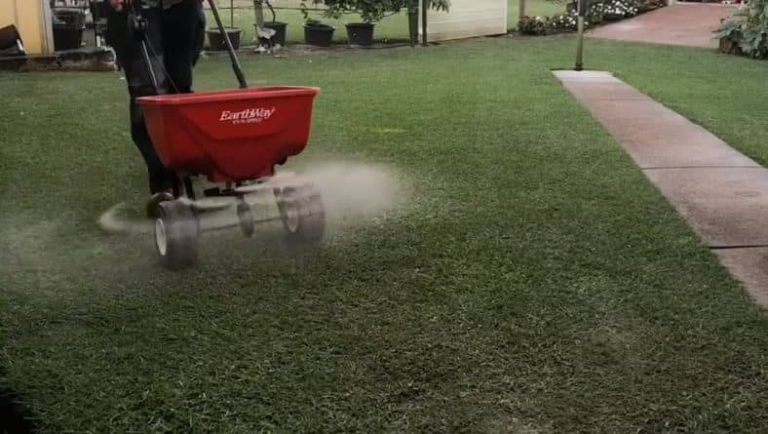Grass that Grows in Sand: Varieties that Will Grow in Sandy Soil
Do you live in a region with sandy soil that makes growing grass on your lawn difficult? Looking for advice on achieving a healthy, thriving turf on sandy soil? It’s good to note that not all grass varieties thrive in sandy soils. The grass must be deep-rooted to access nutrients and water from quickly draining sandy soil to grow actively. But what grass varieties should I establish in sandy soil?
Zoysia, Bermuda, Kentucky, tall Fescues and Bahia grass are the best varieties to establish and grow in sandy soil. To effectively cultivate these varieties, you must look at; growth rate, root structure, and tolerance to drought, shade, temperatures and salty water. Compare grass features with your area of residence’s climatic and soil conditions, pros and cons, before narrowing it down to one.
Here I’ll share some tips, grass varieties and ways we have effectively used to establish and maintain grass lawns on sandy soils.
Will grass grow in sandy soil?
Yes, grass can grow on sandy soil, albeit only under specific conditions. Naturally, sandy soil is not its most-preferred growth medium, as grass typically requires high amounts of moisture to sustain proper growth. This is difficult to achieve in sandy soil, which typically has poor moisture retention properties. Moreover, sand reduces soil fertility while minimizing the soil’s ability to hold nutrients crucial for turfgrass development.
The final reason why it’s difficult to grow grass in sandy soil is that sand creates sizable air pockets that inhibit root development since the thin and feeble roots of turfgrasses typically require soil particles that are sufficiently compact for improved penetration and stability during root establishment. To successfully grow a beautiful, lush green turf on a lawn with sandy soil, you can make various adjustments to the soil; while settling for a turfgrass variety known to do well in sand. We discuss both of these aspects in the subsequent sections.
What grass grows in sand?
For a visually-attractive lawn on sandy soil, you need to select a befitting turfgrass species with specific characteristics such as good drought tolerance and deep root penetration. Since sandy soil has poor moisture retention, a drought-tolerant turfgrass variety is the most likely to survive these relatively dryer soil conditions. Meanwhile, turfgrasses with strong and deep-penetrating roots can penetrate the air pockets for improved moisture and nutrient intake. We discuss the top turfgrass species/varieties with such characteristics below:

The table below summarizes the five types of turfgrasses discussed below as being suitable for planting on sandy soil. The table includes details on the required soil type, water requirements, growing season, sunlight requirements, and pH preferences.
| Type of Turfgrass | Required soil type | Water requirements | Is it warm or cool-season grass? | Sunlight requirements | pH |
| Zoysia Grass | Prefers loamy soil- but can grow in sandy soil | At least one inch of irrigation per week | Warm-season grass | Prefers direct, full sunlight exposure but can withstand partial shade. | Between 5.8-7.0 |
| Bermuda Grass | Prefers deep sandy loam soil | Requires about 1- 1.25-inches of moisture per week to thrive | Warm-season grass | Requires at least 7 hours of daily direct sunlight exposure | Between 5.5-6.5 |
| Kentucky Bluegrass | Prefers medium-textured limestone soil | Requires at least two inches of water per week to thrive | A perennial, cool-season grass | Prefers direct, full sunlight exposure but can withstand mild shading. | Between 6.0- 7.5 |
| Tall Fescue Grass | Prefers sandy and heavy-clay soils | Requires about 1- 1.25-inches of moisture per week to thrive | A cool-season turfgrass species | Requires between 4-6 hours of dappled/filtered sunlight per day | Between 5.8-6.5 |
| Bahia Grass | Prefers acidic soil | Requires between 0.25- 0.5-inches of moisture per day to thrive | A warm-season turfgrass | Prefers full-sunlight exposure but can withstand light shading | Between 5.5-6.5 |
1. Zoysia Grass
Landscaping professionals often recommend this warm-season turfgrass for lawns with sandy soil due to its deep-penetrating roots. Typically, Zoysia grass requires hours of daily sunlight exposure but could still thrive under partially shaded conditions. Since its a drought-tolerant grass variety, Zoysia grass has minimal water requirements. You can establish using sods or zoysia grass seed to get a dense
2. Bermuda Grass
Also known as ‘Devil’s Grass, ’ Bermuda grass is a popular warm-season grass, especially amongst homeowners in the Southern states. Its` most outstanding feature that makes it great for sandy soil is its deep-rooting nature. What’s more, Bermuda grass is adapted to thrive in both drought and rainy conditions.
On the flip side, Bermuda is not a shade-tolerant grass variety and requires a sufficient amount of daily, direct sunlight exposure to maintain its beautiful, lush green appearance. Finally, Bermuda grass has a short stature, which is great for sandy soil, as taller grass varieties suffer from instability in such soil conditions.
3. Kentucky Bluegrass
Scientifically referred to as Poa pratensis, Kentucky Bluegrass is a perennial turfgrass that can also thrive in sandy soil, albeit under the right soil fertility conditions. This is due to its ability to thrive even in dry soil conditions. In terms of light requirements, this grass species requires partial to full sunlight exposure and is also great for regions with highly humid climates.
This grass variety also needs an adequate water supply to thrive, especially during the warmer seasons. Under optimum conditions, your Kentucky bluegrass will grow to form a dense turf that will enhance your curb appeal.
4. Tall Fescue
Fescues are a cool-season turfgrass genus, and some species of this turfgrass group are adapted to sandy soils, including tall, hard, and red fescue. These three fescue species are the most drought-tolerant, and tall fescue- in particular- boasts good shade tolerance. Creeping red tall fescue prefers sand with a pH range of 5.8-6.5 and does well in different soils, highly adaptive to different soil types with at least 4 hours of direct sunlight exposure.
5. Bahia Grass
This perennial turfgrass species has unmatched drought resistance, with some varieties boasting deep-penetrating roots that go as far as 12 feet into the ground. Bahiagrass, therefore, is capable of surviving in sandy soil that can barely hold moisture. Its low-growing nature also enables easy stabilization, while its ability to thrive on minimal nutrients makes it great for nutrient-deficient, sandy soil.
How to grow grass in the sand?
To successfully grow grass in sandy soil, consider the strategies discussed below:
- Boost the soil’s moisture retention capabilities– sandy soil can barely hold water long enough to allow for adequate absorption by the roots of your planted grass. You can boost grass growth by top-dressing lawn or adding loamy topsoil/ organic garden compost onto your sandy soil to boost its moisture-retention capabilities.
- Establish the turf via seed or sod– for higher chances of success during turf establishment on sandy soil, seeding or sodding is recommended over sprigging and plugging. When sodding, ensure that the roots of your sod grass come into contact with your topsoil during installation while also ensuring daily irrigation post-installation. If you’re planting your grass via seed, ensure uniform distribution by using a broadcasting machine. You can also mulch the lawn post-seeding to encourage moisture retention. You can mulch with straw or its alternatives like peat moss, sawdust etc to enhance seed germination.
- Water frequently, but avoid overwatering– while you may need to water your sandy soil lawn frequently to keep it adequately moist to support grass growth, you should only water for relatively short durations during each irrigation session, as too much water can wash away some of the planted seeds. This would then leave you with unsightly, bare spots on your lawn once the seeds germinate and the grass grows.
- Fertilize your soil– this is especially important if you live in an area that rains often, as the excess rainwater will most likely wash away most nutrients in the soil. A slow-release fertilizer applied atop the sandy soil at least once per month can significantly boost turfgrass development. Follow manufacturers’ instructions to avoid over-fertilizing your sandy soil, as this will most likely lead to water table contamination.
- Mow at the appropriate height- mowing turfgrasses on sandy soil at a height of between 2.5-3.5 inches is an excellent way of encouraging deeper root establishment.
What grass is best for sandy soil in Florida and Texas?
Florida and Texas are both Southern states, where the weather is typically warm and sunny for most parts of the year. Under such conditions, you typically expect less soil moisture due to increased evaporation. Add to that sandy soil that can’t hold moisture for long, and what you need is a deep-rooting, drought-tolerant, warm-season turfgrass variety that can withstand these seemingly harsh conditions. Below is a list highlighting some of the best warm-season turfgrasses adapted to thriving in sandy soil, which you may find suitable for your Florida or Texas lawn:
- Oasis Bermuda Grass
- Blackjack Bermuda Grass
- Yukon Bermuda Grass
- Riviera Bermuda Grass
- Zenith Zoysia Grass
- Compadre Zoysia Grass
- Centipede Grass
- The ‘Buffalo Supreme’ variety of Buffalo Grass
- Carpet Grass
- Bahia Grass
Tips: Considerations when choosing the best grass for sandy soil
You need to consider a few things before buying seeds, new sods, and seeding your sandy soil lawns.
- Use: (foot traffic, shade, and sunlight). Foot traffic may add stress to the already straining lawn. Pets and kids playing on the lawn, shade, and access to sunlight can determine the turfgrass lawn establishment. Paying attention to the intended use would help you get the best grass tuff to establish, considering the characteristic of each tuff grass.
- Climatic conditions: (heat, humidity, drought, rainfall). Sandy soils are most common in drought-prone areas. Consider your area’s humidity, heat, and rainfall and compare them with the lawn characteristics to end up with well-deep-rooted tuff grass with low maintenance needs like watering. Transition zone grasses will not do well in the southern, northern, or pacific regions.
- Features: (root system, tolerance to shade, drought, sunlight, growth rate). The root system tends to determine how well-established the grass will be. A deep-rooted turfgrass should be your target depending on how dry the area is and the exposure to sun and its intensity. Different turfgrass has a different ability to tolerate extreme sunlight exposure. Getting a variety that has a faster growth rate and is deep-rooted for sand soil should be a priority.
Will grass seeds grow in sandy soil?
Kentucky bluegrass, Tall fescue, Zoysia, are the best type of grasses that will grow in a sand beach house
References
Purdue University: Maintaining Lawns on Sandy Soils



